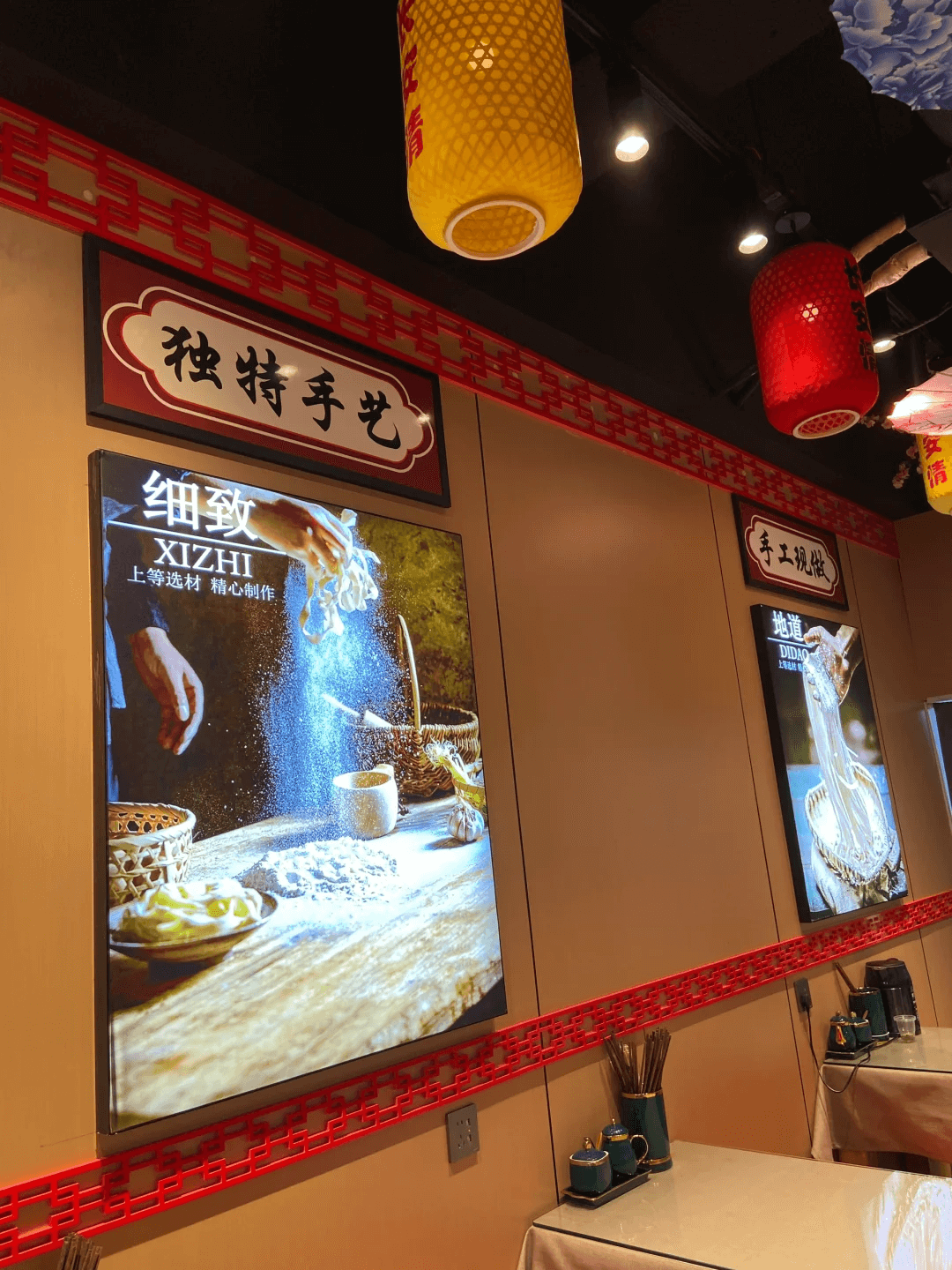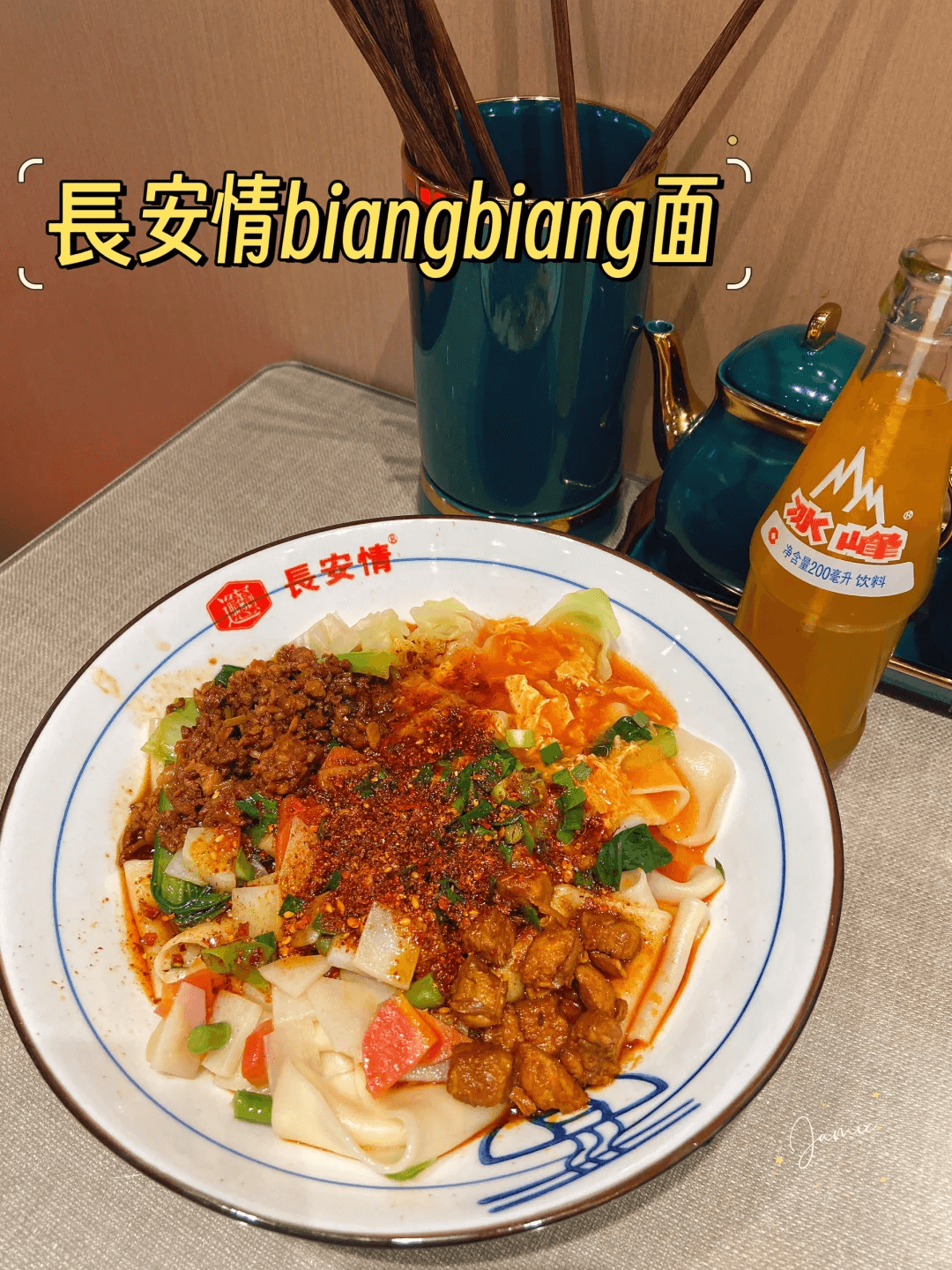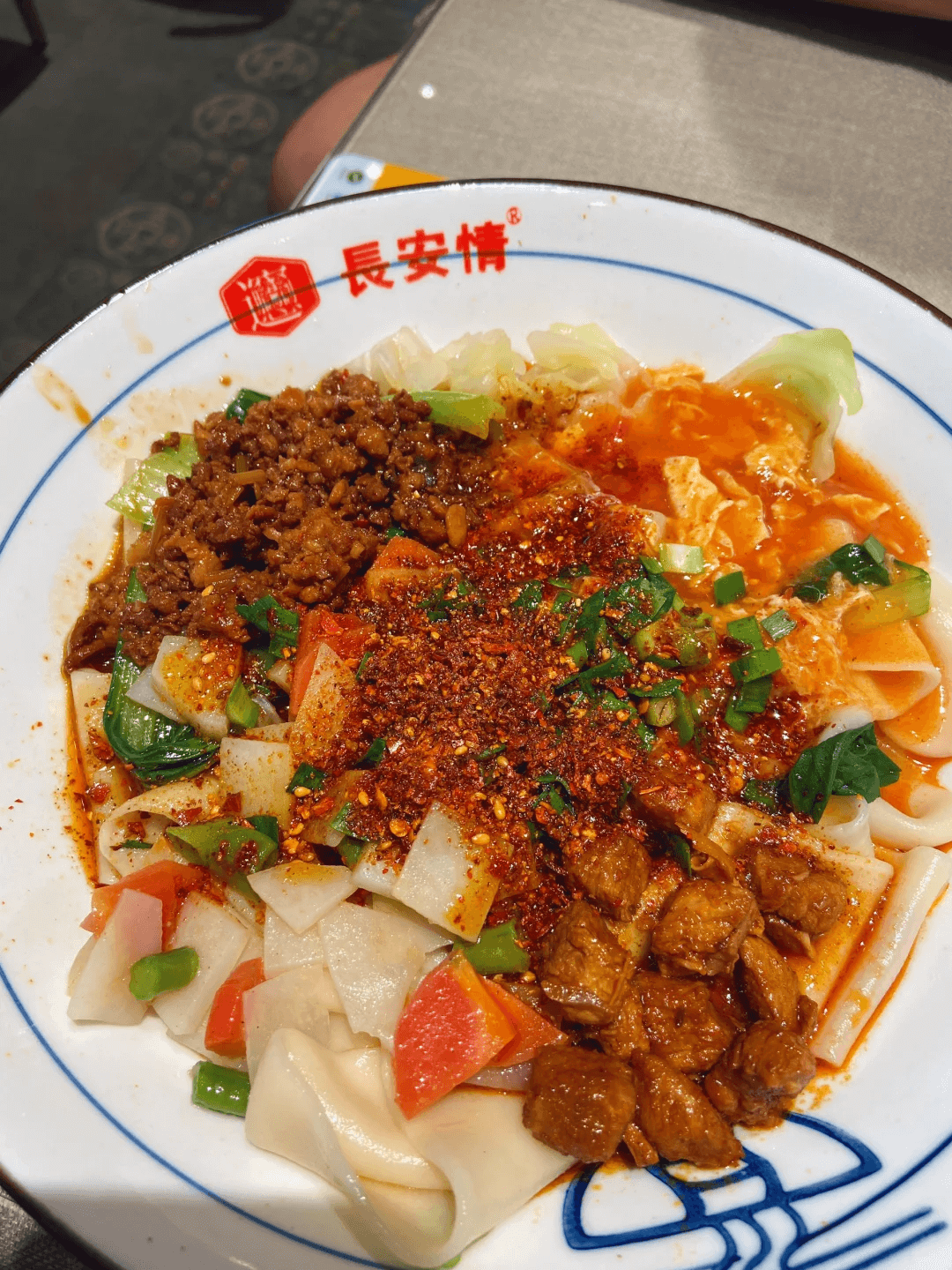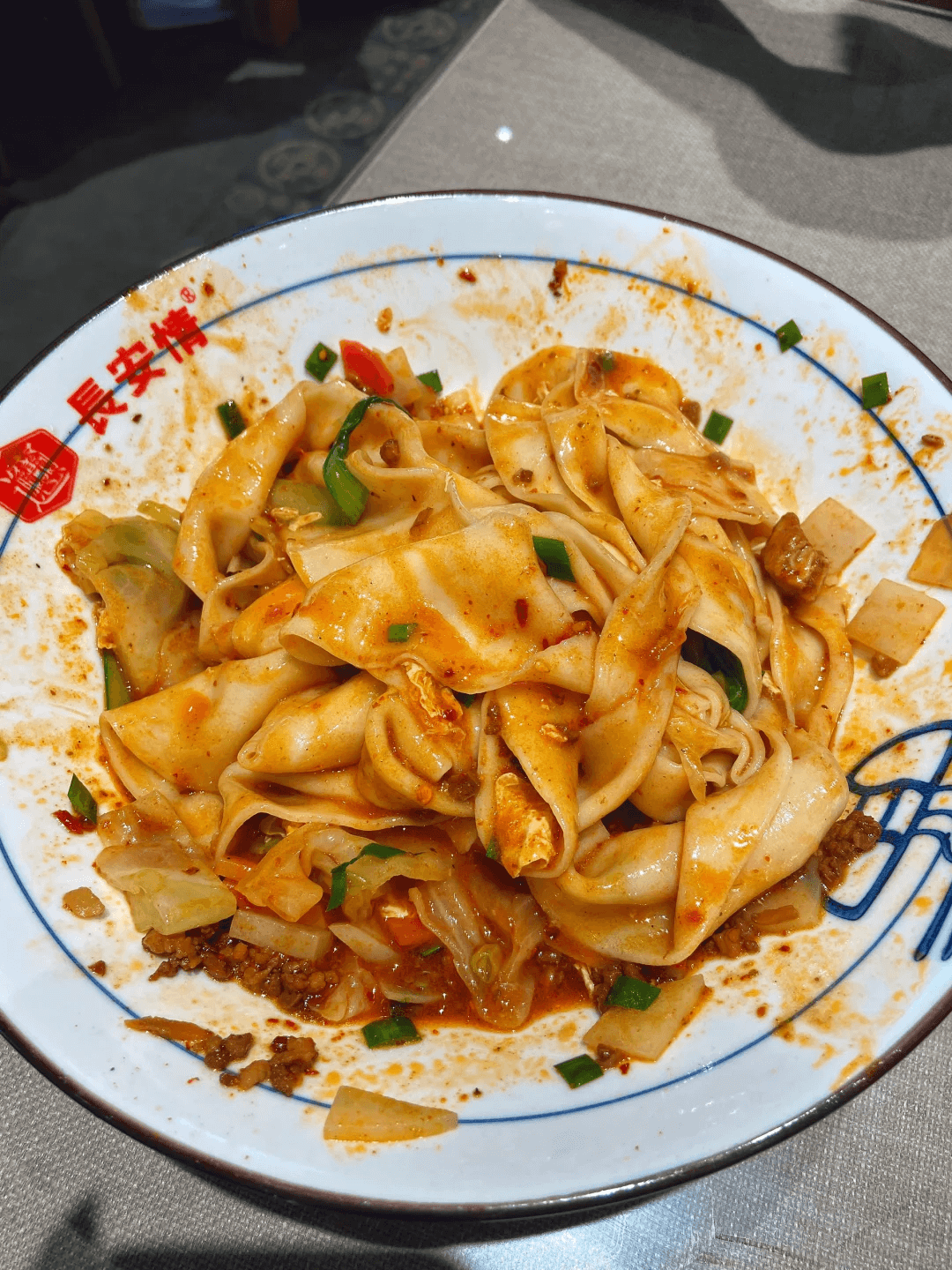Last weekend, I set out with friends for a leisurely stroll through Xi’an, the ancient capital of China, known for its rich history and vibrant food scene. The weather was pleasantly cooler than recent days, making it the perfect opportunity to explore local cuisine. After a quick search, we stumbled upon a highly recommended spot for one of Xi’an’s must-try dishes: Biangbiang noodles. The restaurant, 长安情 biangbiang 面 (Changanqing Biangbiang(𰻞𰻞麵) Noodles) at its Anyuan branch, promised an authentic taste of Shaanxi’s beloved dish. If you’re planning a visit, simply copy and paste “长安情 biangbiang 面 安远门店” into your map app to find it. Here’s my experience diving into this culinary gem, complete with its history, preparation, and my personal take on its flavors and ambiance.

Table of Contents
ToggleMy Biangbiang Noodle Experience
Walking into Changanqing Biangbiang Noodles, I was immediately struck by the lively atmosphere. The restaurant was buzzing with locals and tourists alike, all eagerly slurping down steaming bowls of noodles. The decor was simple yet charming, with wooden tables and walls adorned with calligraphy celebrating Xi’an’s food culture.

The open kitchen allowed us to watch the chefs expertly stretch and slap the dough, a performance that added to the excitement.
When my bowl of Biangbiang noodles arrived, I was in awe of its presentation. The noodles were impressively wide, glistening with a vibrant red chili oil that promised a flavor explosion. Topped with fresh green onions, tender braised pork, and a sprinkle of sesame seeds, the dish was as visually appealing as it was aromatic.



My first bite was a revelation—the noodles were thick, chewy, and perfectly al dente, soaking up the tangy, spicy sauce. The balance of heat, umami, and slight acidity was spot-on, with each bite delivering a satisfying mix of textures and flavors. The pork was melt-in-your-mouth tender, and the fresh herbs added a burst of brightness. It was a hearty, soul-warming dish that felt like a hug in a bowl.
The Ambiance and Vibe
The environment at Changanqing Biangbiang Noodles was warm and welcoming, with friendly staff who were happy to explain the menu and recommend pairings. The restaurant was clean and well-lit, with a casual vibe that made it easy to relax and enjoy the meal. The sound of slurping noodles and cheerful chatter created a lively yet cozy atmosphere, perfect for a weekend outing with friends. It’s the kind of place where you feel like a local, even if you’re just visiting.
Why You Should Try Biangbiang Noodles in Xi’an
If you’re in Xi’an, Biangbiang noodles are a must-try for any food lover. This dish is more than just a meal—it’s a cultural experience that captures the heart of Shaanxi’s culinary heritage. Whether you’re a fan of bold, spicy flavors or simply curious about authentic Chinese street food, Biangbiang noodles deliver. The combination of chewy noodles, fragrant sauce, and fresh toppings is unforgettable, and the lively atmosphere at places like Changanqing makes the experience even more special.
Xi’an is home to a great variety of delicious foods, and the oil-splashed biangbiang noodles are just a small part of them. For more, click here to check out the complete Xi’an food guide: https://xiancitytravel.com/food-guide.html
I’m planning to try Xi’an’s roujiamo, the Chinese hamburger, next time.
The Origins of Biangbiang Noodles
Biangbiang noodles, a Shaanxi specialty, are as fascinating as they are delicious. The dish gets its quirky name from the sound the dough makes when slapped against a table during preparation—a rhythmic “biang biang” that echoes through Xi’an’s bustling noodle shops. This dish is deeply rooted in Shaanxi’s culinary tradition, with its wide, belt-like noodles symbolizing the region’s hearty, no-nonsense approach to food.
Legend has it that the character for “biang” is one of the most complex in Chinese, with over 50 strokes, reflecting the dish’s bold and intricate flavors. These noodles have been a staple for locals, offering a satisfying meal for workers and travelers alike, and they’ve gained fame for their unique texture and robust sauces.
How Biangbiang Noodles Are Made
The magic of Biangbiang noodles lies in their preparation. The dough is made from simple ingredients—flour, water, and a pinch of salt—but the process is anything but ordinary. Chefs knead the dough until it’s smooth and elastic, then pull or slap it into long, wide ribbons that can stretch up to two inches across.
These noodles are boiled until perfectly chewy, achieving a “Q” texture—a term locals use to describe the ideal springy, al dente bite. The dish is then tossed with a signature sauce, often a fiery mix of chili oil, soy sauce, vinegar, and garlic, and topped with ingredients like scallions, cilantro, ground pork, or vegetables. Some variations include a drizzle of sizzling hot oil poured over the toppings, releasing an irresistible aroma that fills the air.
Tips for Visiting
- Location: Search for “长安情 biangbiang 面 安远门店” on your map app to find the Anyuan branch.
- Best Time to Visit: Go during off-peak hours (late morning or early afternoon) to avoid crowds.
- Customization: Ask for adjustable spice levels if you’re sensitive to heat.
- Pairing: Pair your noodles with a cold glass of suanmeitang (sour plum juice) for a refreshing contrast.
Final Thoughts
My visit to Changanqing Biangbiang Noodles was a highlight of my Xi’an trip, deepening my appreciation for Shaanxi’s iconic noodle culture. The dish’s bold flavors, unique texture, and vibrant presentation make it a standout, and the welcoming vibe of the restaurant only added to the experience. I wholeheartedly recommend Biangbiang noodles to anyone visiting Xi’an—it’s a culinary adventure you won’t forget. So, grab your friends, head to this local gem, and dive into a bowl of Xi’an’s finest!